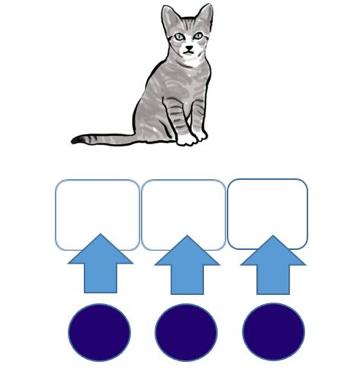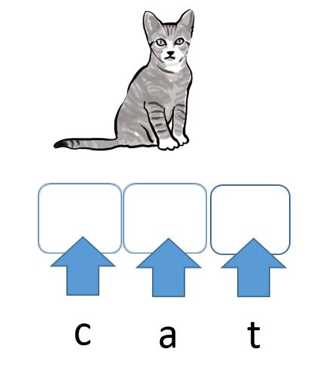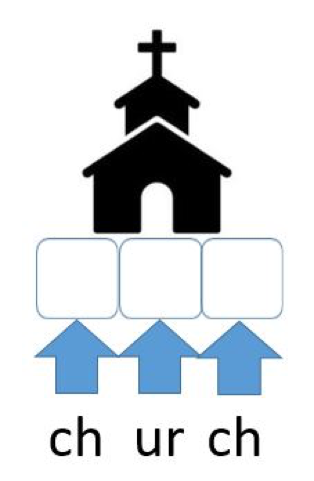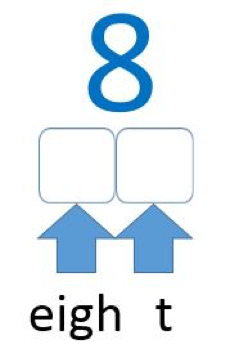How we develop orthographic mapping
Home » Phonics » Essential principles of systematic and explicit phonics instruction » How we develop orthographic mapping
Orthographic mapping defined
When we have seen and read a word many times, it is stored in long term memory as a unique letter string and can be read instantly. This process is referred to as ‘orthographic mapping’ (Ehri, 2015). Orthography is the spelling system of a language.
Kilpatrick (2015) describes orthographic mapping as “the mental process we use to permanently store words for immediate, effortless retrieval. It is the process we use to take an unfamiliar printed word and turn it into an immediately recognisable word”.
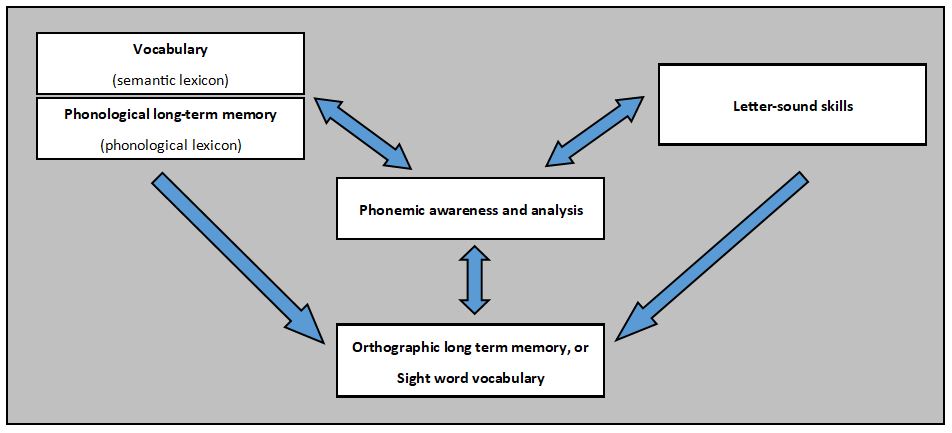
Orthographic mapping is not the same as learning words as ‘sight words’, where words are memorised as logographs (word shapes) without reference to the grapheme-phoneme properties of the word.
Orthographic mapping has three essential components:
- Automatic letter-sound associations – Correctly identifying letter names and the phonemes they represent, for example for single graphemes /b/, /k/, digraphs /sh/, /ch/, /ou/, /ea/, trigraphs /igh/, /dge/, /tch/ and quadgraphs /ough/, /eigh/ and so on.
- Proficient phonemic awareness – Automatic access to the sounds in spoken words and being able to perform phoneme manipulation.
- Word study – Making the connections between the phonemes/sounds in oral words and graphemes/letters in written words to eventually secure them for future fast retrieval. Word study will have limited success if the learner has weak letter-sound associations and/or weak phonemic awareness.
After approximately one to four exposures to a written word, the word becomes ‘unitised’ or instantly familiar (Kilpatrick, 2015). We can say it has been orthographically mapped when we can quickly and effortlessly recognise the word when we see it again and when words that look similar are no longer confused e.g. barn/bran or small/smell.
Unitisation of words does not mean that proficient readers go from images of words to meanings. Dehaene (2019) states that
“[N]othing could be further from the truth. An entire series of mental and cerebral operations must occur before a word can be decoded. Our brain takes each string apart. Then recomposes it into a hierarchy of letters, bigrams, syllables and morphemes. Effortless reading simply serves to show that these decomposition and recomposition stages have become entirely automatic and unconscious”.
Neuroimaging and eye tracking research has demonstrated that skilled readers process every single letter of the printed word from left to right and in parallel. This is done so quickly and automatically that it is imperceptible to the reader.
Once early learners have acquired a reasonable knowledge of grapheme/phoneme correspondences and developed a store of words that they can read effortlessly via phonological recoding, they then begin to transfer this knowledge of known words to help decode unknown words – this is known as the self-teaching hypothesis, and explains why we can read new, unfamiliar, or nonsense words such as ‘bame’, ‘zans’, ‘wingardium leviosa’ or ‘crodsquinkled’ on our first encounter of the word in a text.
This mapping process means that students are developing their knowledge of common letter combinations, as well as ‘legal’ and ‘illegal’ English spellings. They are building their knowledge of English orthography. There is a two-way relationship between orthographic learning and vocabulary development (Wegener et al., 2022).
Teachers can help orthographic mapping to develop
Orthographic mapping is not a teaching method; it is the cognitive process by which words become embedded in long-term memory. However, beginning readers may need help to establish orthographic mapping by developing its components.
Through direct phoneme-grapheme mapping exercises students will understand how to form connections between oral phonemes in spoken words and the corresponding grapheme representations in print. Before students can attempt a direct mapping exercise like this they must have the ability to orally segment a word and have some knowledge of letter-sounds. An essential part of this process is the anchoring of the graphemes to the phoneme sequence in the spoken word, for example recognising the difference between ‘pot’ and ‘top’.
A useful activity for developing phonemic awareness and word study involves using Elkonin boxes. These boxes are commonly used for phonemic awareness activities when performed with counters only (Figure 1), however, once students have an understanding of basic graphemes, letters can then be used. This helps learners to isolate the phonemes and map them to the letters or graphemes. This in turn helps them to make the essential connection between phonemes in oral words and letters in written words. It also assists with understanding the critical processes of segmenting and blending.
Initially students would be asked to isolate the phonemes in words with short simple regular phoneme grapheme correspondences as in Figure 2. As students build their knowledge of grapheme phoneme correspondences these can become more complex (Figures 3, 4, and 5). Initial encounters with words are slow until fast word recognition develops. So, how do we do this?
Cognitive neuroscientists such as Dehaene and Cohen (2011), have examined regions of the brain responsible for storage of language, vision and memory and found we have parts of our brains that are responsible for perceiving and storing fine sequential associations between letter sequences and spoken pronunciations. This part of the brain unitises encountered sequences allowing for instant access to the spoken form. This unitisation is dependent upon phonological and letter sound processing, therefore it is essential that we teach students letter sound knowledge, build morphological and phonological understanding, as well as practice phonemic awareness, introducing letters early in the process. See our blending and segmenting page for more details.
Since orthographic mapping is dependent on seeing a word on multiple occasions, frequent exposure to text is critical, especially decodable texts with frequently repeated grapheme-phoneme correspondences, in the early stages of reading.

